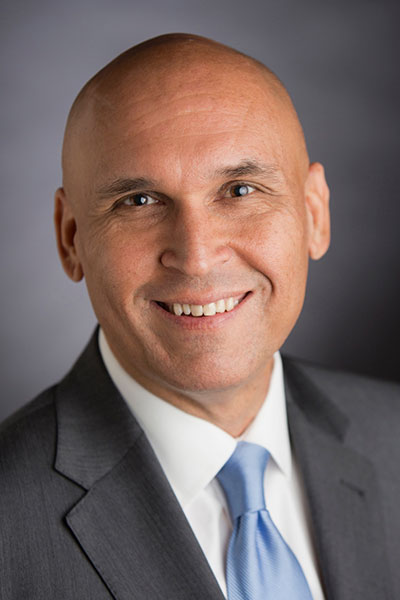Texas Community Colleges Prepare for COVID-19 Challenge Q&A with Ray Martinez III, J.D.
Deputy Commissioner for Academic Affairs and Workforce Education
Texas Higher Education Coordinating Board
Higher education faces an uncertain future this fall, brought on by the novel coronavirus. Deputy Commissioner Martinez recently discussed with Line Items some of the implications for and contingency plans by the state’s community colleges as they accommodate potentially more students with prospectively fewer resources.

Ray Martinez III, J.D.
Deputy Commissioner for Academic Affairs and Workforce Education, Texas Higher Education Coordinating Board
Fiscal Notes: How do you anticipate enrollment will change this summer and/or fall?
Martinez: There remains great uncertainty around fall enrollment, especially for broad-access institutions like community colleges. Although enrollment may fluctuate in the summer and fall, past [experience has] shown that higher education enrollment often increases during economic downturns.
Many students, families and institutions remain concerned about how to safely operate in the fall, and whether the financial impact of the pandemic could cause some Texans to forgo pursuing or completing higher education.
FN: How well prepared – fiscally and physically – are community colleges for an influx of new students?
Martinez: The COVID-19 crisis has been enormously disruptive to higher education operations. However, institutions across Texas, including community colleges, are responding swiftly and creatively to ensure the safety of their students, faculty and staff, while supporting students’ continued academic progress. Serving the majority of enrolled students across all of Texas higher education, community colleges are well prepared to provide high-quality academic and workforce course offerings to current and incoming students.
It is difficult to quantify the full extent of the financial impact on our colleges and universities due to the COVID-19 disruption. Costs ... include course conversion, student reimbursements and sudden revenue losses. Although the Coronavirus Aid, Relief, and Economic Security (CARES) Act funding will offset some losses, we know there will continue to be significant financial strain across all sectors of higher education.
To further aid students, the Coordinating Board and three Texas-based foundations recently awarded grants totaling $711,000 to more than 50 Texas higher education institutions, including 29 community colleges. The funding supports students in every region of the state during this crisis.
FN: Which job skills gaps and in-demand degrees will community colleges need to fill and supply, respectively?
Martinez: Our higher education institutions – particularly our community colleges – will play critical roles in providing Texans with opportunities to gain credentials of value that will help drive the recovery of the Texas economy. This is something we were already working on prior to the pandemic; it will be an even higher priority moving forward.
As Higher Education Commissioner Harrison Keller has often stated, in today’s Texas economy, jobs follow skills. After the Great Recession, nearly all the new jobs created in the United States – and some 85 percent of the new jobs created in Texas – required at least some education beyond high school. Moreover, high-quality postsecondary credentials are the best insurance policies against long-term unemployment, which for workers with only high school diplomas can be 80 percent more likely than for those with postsecondary credentials.
Community colleges are moving quickly to connect with the Coordinating Board, Texas Workforce Commission and, most importantly, with employers across the state to help align postsecondary and workforce needs. Identifying existing skills gaps and jobs most in demand will lead to the creation of high-value degree and credential programs, allowing workers displaced by COVID-19 to reskill, upskill and get back on their feet.
FN: What are the implications for dual credit (high school students taking college courses for both college and high school credit)?
Martinez: Enrollment in dual credit courses continues to increase, and more course offerings are likely, especially in high-demand workforce fields like cybersecurity and cloud computing.
FN: What other changes in curricula and/or operations might this crisis prompt?
Martinez: The rapid transition to remote course delivery likely will have many lessons for higher education. Texas institutions across the spectrum are learning about remote learning and the importance of professional development to allow the implementation of high-quality distance education delivery. Understanding the availability of technology and the ability to implement it in ways that students continue to feel connected and advance their education are likely to remain priorities beyond the pandemic.
The economic impact of community colleges in Texas, as well as some of the issues they face, is featured in the June/July 2020 edition of Fiscal Notes. FN.


